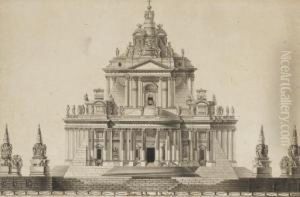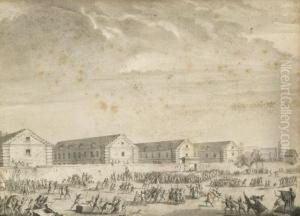Jean Louis Ii Prieur Paintings
Jean Louis Prieur, commonly referred to as Jean Louis II Prieur to distinguish him from other artists with similar names, was a French artist known primarily for his work during the Rococo period and his transition into Neoclassicism. Born in 1732, he was a prominent decorative artist and sculptor, whose work often reflected the tastes and aesthetics of the late 18th century in France.
Prieur was trained in the thriving artistic environment of Paris, where he developed his skills in various mediums including drawing, painting, and sculpting. His early work was marked by the intricate and ornate style of the Rococo, characterized by elaborate ornamentation and playful themes that were popular among the French aristocracy of the time.
As the 18th century progressed, Prieur, like many of his contemporaries, began to embrace the emerging Neoclassical style. This shift was partly influenced by the discovery of ancient ruins in Herculaneum and Pompeii, which sparked a broader interest in classical art and architecture. Neoclassicism was seen as a return to the purity and simplicity of ancient Greek and Roman art, and it became a dominant style during the latter part of the century, particularly after the French Revolution.
Despite the turmoil of the French Revolution, Prieur continued to work and created several notable pieces during this period. His work from this time reflects the changing political and cultural landscape of France, as the revolution brought about a rejection of the excesses of the monarchy and the aristocracy, which were associated with the Rococo style.
Jean Louis Prieur's career was cut short by the chaos of the Revolution. He was caught up in the political upheavals of the time and tragically became one of its many victims. Prieur was executed in 1795, during the Reign of Terror, a period of extreme violence and paranoia when many artists, intellectuals, and members of the former aristocracy were put to death.
While Prieur's life and career were relatively short, his work remains an important part of the artistic heritage of the Rococo and the transition to Neoclassicism. His pieces can be seen as a reflection of the complex social and political changes that were occurring in France during his lifetime.

